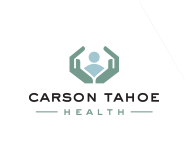Interventional Cardiologist, Dr. Stephen Tann has performed the first-ever Drug Coated Balloon (DCB) treatment in Nevada. The procedure took place at Carson Tahoe Regional Medical Center which was selected as the first hospital in Nevada to perform this new, innovative therapy for qualified Peripheral Artery Disease (PAD) patients! The new Lutonix® 035 Drug Coated Balloon PTA Catheter is the first and only DCB approved by the Federal Drug Administration. This new therapy dramatically improves the long-term durability of angioplasty procedures and decreases the need for repeat procedures for those suffering from PAD. Here, Dr. Tann provides questions to the most FAQ about the new procedure…
Q: What is peripheral arterial disease?
A: PAD stands for peripheral arterial disease. It is atherosclerotic disease in arteries supplying the ‘periphery’ of the arterial system. Examples of vessels PAD can involve are the arteries in the legs, the neck, the arms, the kidneys, and the gut.
Q: What are the risks associated with peripheral arterial disease and how is it prevented?
A: The risks for PAD are the same risks as for coronary artery disease: smoking, diabetes (even more potent a risk factor for PAD than CAD), high blood pressure, high cholesterol, obesity, sedentary lifestyle/lack of exercise, family history of heart and vascular problems, and advancing age.
Q: How can one be screened for peripheral arterial disease and how is it treated?
A: Screening for PAD can be done with simple measurements of blood pressure in the arms and legs, as well as simple, non-invasive ultrasound tests. Treatment options range from a walking regimen to medical therapy to percutaneous revascularization (ie angioplasty and stents) to open surgical procedures.
Q: Are there benefits to being diagnosed and treated early?
A: Diagnosing PAD early is crucial. First, if PAD is caught early, most times it can be managed conservatively with diet, regular exercise, and medications. As such, invasive procedures to correct serious blockages can usually be avoided. More importantly, however, identifying PAD identifies an individual at high risk for also having coronary artery disease, which is more often than not more dangerous to the person’s life and longevity than is the PAD. Identifying PAD will alert a clinician to then look for coronary heart disease. If this is caught early, such will have a much greater impact on the patient’s heart health and long term survival.
Q: How is this new therapy/treatment different and/or better than other treatments?
A: We are now using angioplasty balloons coated with medication to treat PAD in some vessels. This is similar to technology used in stents that we have been placing in coronary vessels to treat blockages for several years. The medication prevents re-narrowing (usually due to a type of scar tissue) of the area of blockage once it has been opened with a balloon. This dramatically improves the long term durability of angioplasty procedures, and decreases the need for returns for repeat procedures. Re-narrowing of areas of opened blockage and the resultant need for redo procedures has long been the Achilles heel of treating PAD. The DCBs (drug coated balloons) represent a major advance in this field of treatment.
Q: Why is Carson Tahoe Health one of the first hospitals to offer such treatment in this region?
A: CTH takes pride in offering the newest and most advanced, proven treatments to its community of patients. In the cardiovascular specialties, we make a particular effort to be on the forefront of cardiovascular treatment and technology. We have had our eye on this technology for quite some time, as it has made its way through the process of clinical trials and finally FDA approval. We understand and believe in the science that has brought the DCB technology to market, and we believe in its capacity to revolutionize the way we treat PAD.
Q: What testing or clinical trials were done on product and what were the outcomes? Did you participate in those trials?
A: As with most new medical technology, our European and Asian colleagues have been using the DCB platform for several years. We have been watching and learning from their experience, as clinical trials have been conducted here in the US. The European experience in particular, has been extremely positive in terms of improved outcomes for patients with PAD. This experience takes time to replicate within well designed, vigorously controlled clinical trials. Several such trials have now been completed in the US. A recent large scale, well controlled, randomized clinical trial was just recently published, and this is what finally gained FDA approval for the DCBs. I did not participate directly in these clinical trials, but I am fortunate enough to work closely with physicians who did in the setting of a nearby academic medical center. This placed me and CTH in a position to be the first to be able to offer this new technology to our patients.
For more information, please call (775) 445-5169.







